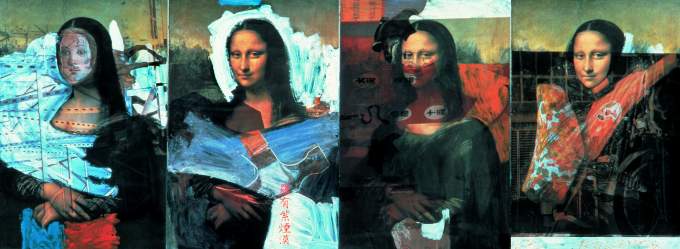
Robert Rauschenberg
Pneumonia Lisa (Japanese Recreational Claywork) 1982 - Detail
Transfer on high-fired Japanese art ceramic
32 1/4 x 86 5/8 x 2 1/4 inches (81.9 x 220 x 5.8 cm)
Robert Rauschenberg Foundation
Fair Use - Amicus Brief
The Robert Rauschenberg Foundation has filed an amicus brief in connection with Goldsmith v. The Andy Warhol Foundation - an important Second Circuit case about copyright’s fair-use doctrine.
The Foundation submitted the amicus brief to propose a framework for understanding fair use that would maintain the proper balance between free expression and the protection of an artist’s creative work, and to provide a roadmap for how courts should determine whether a secondary work is “transformative” of the first. The Foundation argues that courts should undertake a two-step inquiry: First, the court should first compare the two works to determine whether transformation is readily apparent even to the untrained eye. Second, if transformation is not readily apparent, courts should consider additional evidence—from, for example, art historians, curators, members of the relevant audience, or the creator of the secondary work, among other sources— to determine whether the use is transformative despite physical similarities between the two works. The Foundation’s brief displays a number of examples (including Manet’s Olympia, and Charles Lutz’s series Warhol Denied) to illustrate the many ways in which a secondary work of art can transform the meaning and message of a primary work despite physical similarities between the two.
This case presents important questions about the nature and scope of artists’ creative freedom, including their ability to build innovatively on the works of other artists. The Robert Rauschenberg Foundation is the steward of my father’s own legacy of transformative imagery. We therefore appear in this case to urge the Court of Appeals to maintain a robust Fair Use Doctrine as a valuable safeguard on artists’ rights to create expansively, as Bob did in his own work.
-Christopher Rauschenberg, the Foundation’s President.
